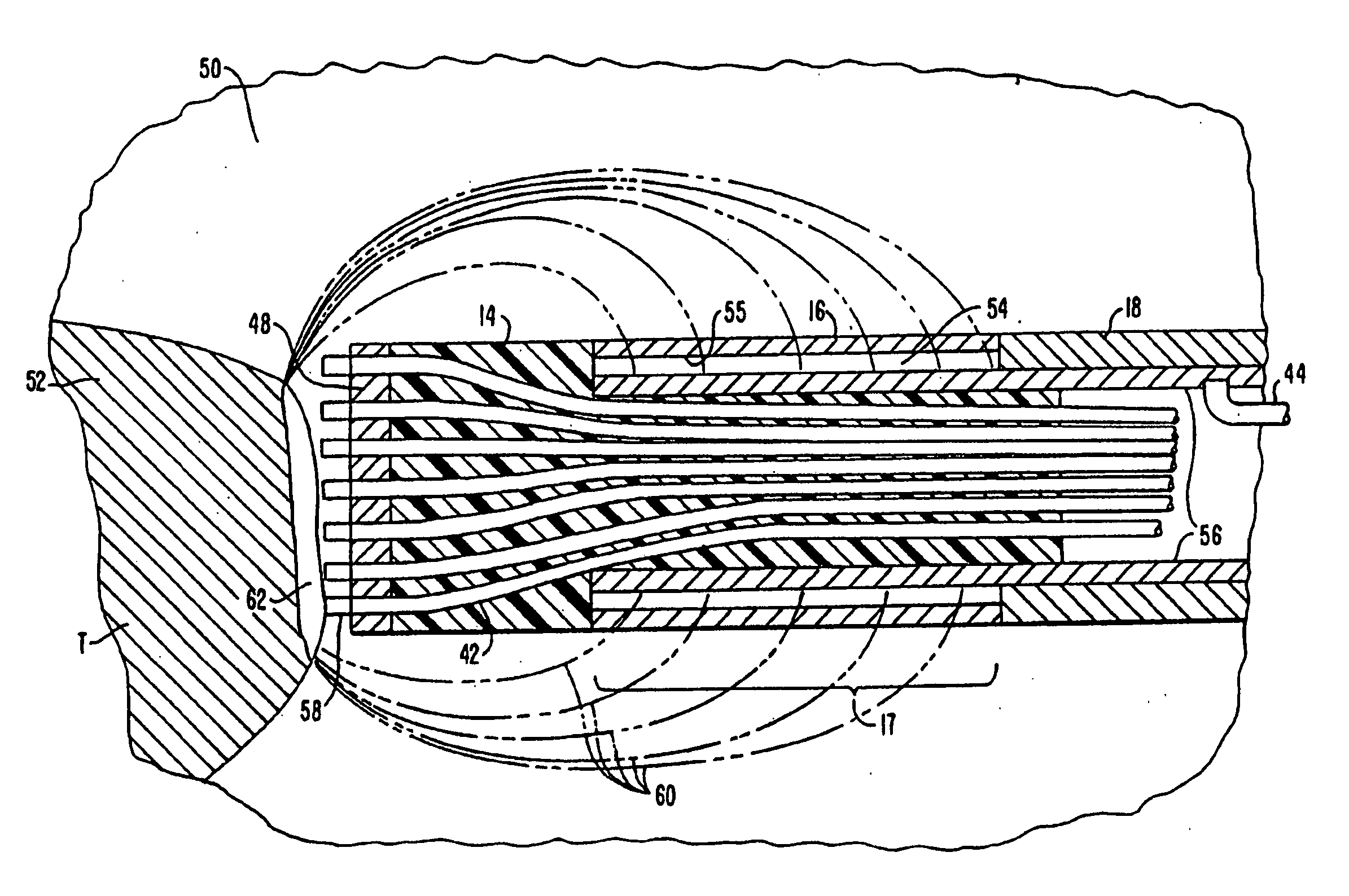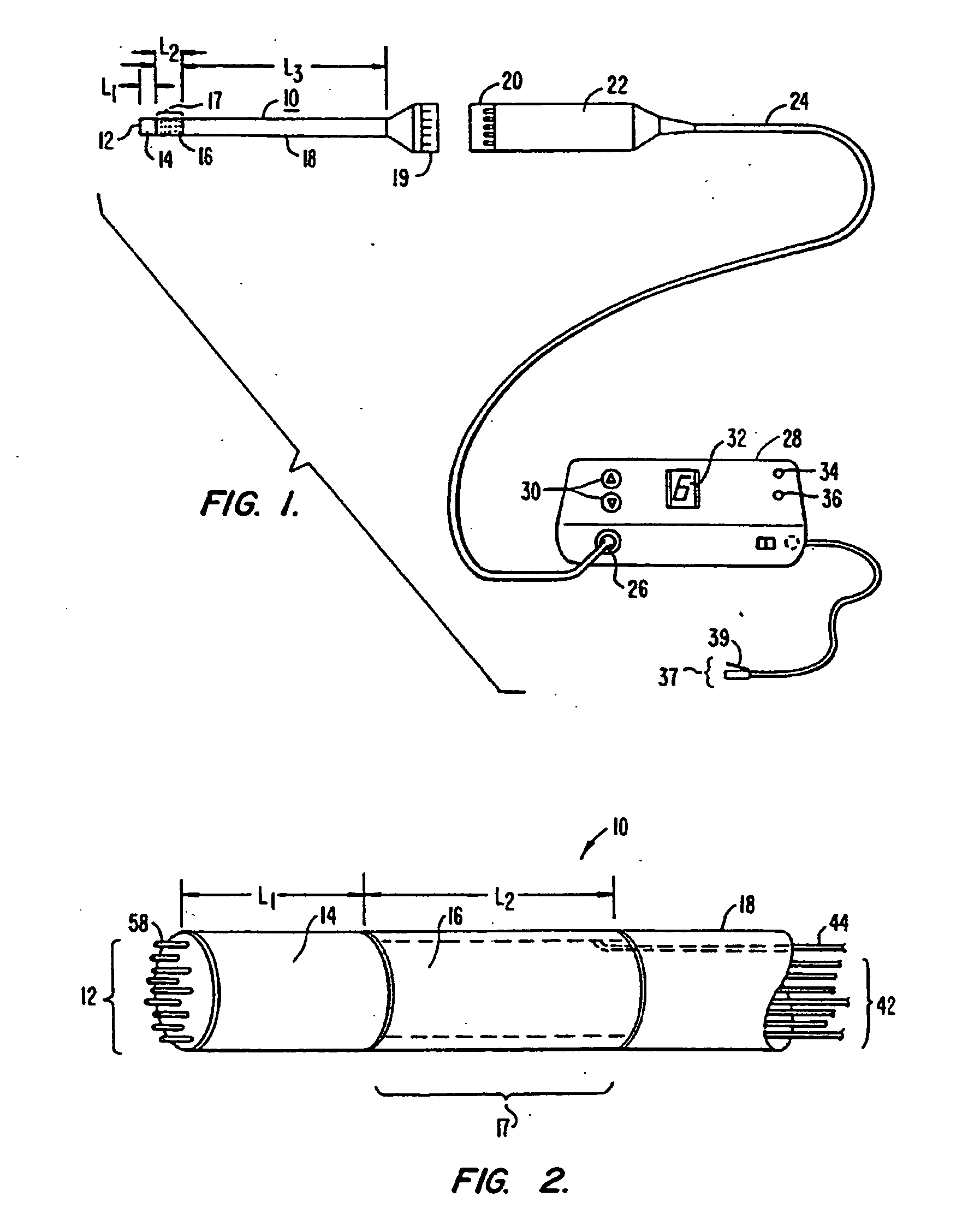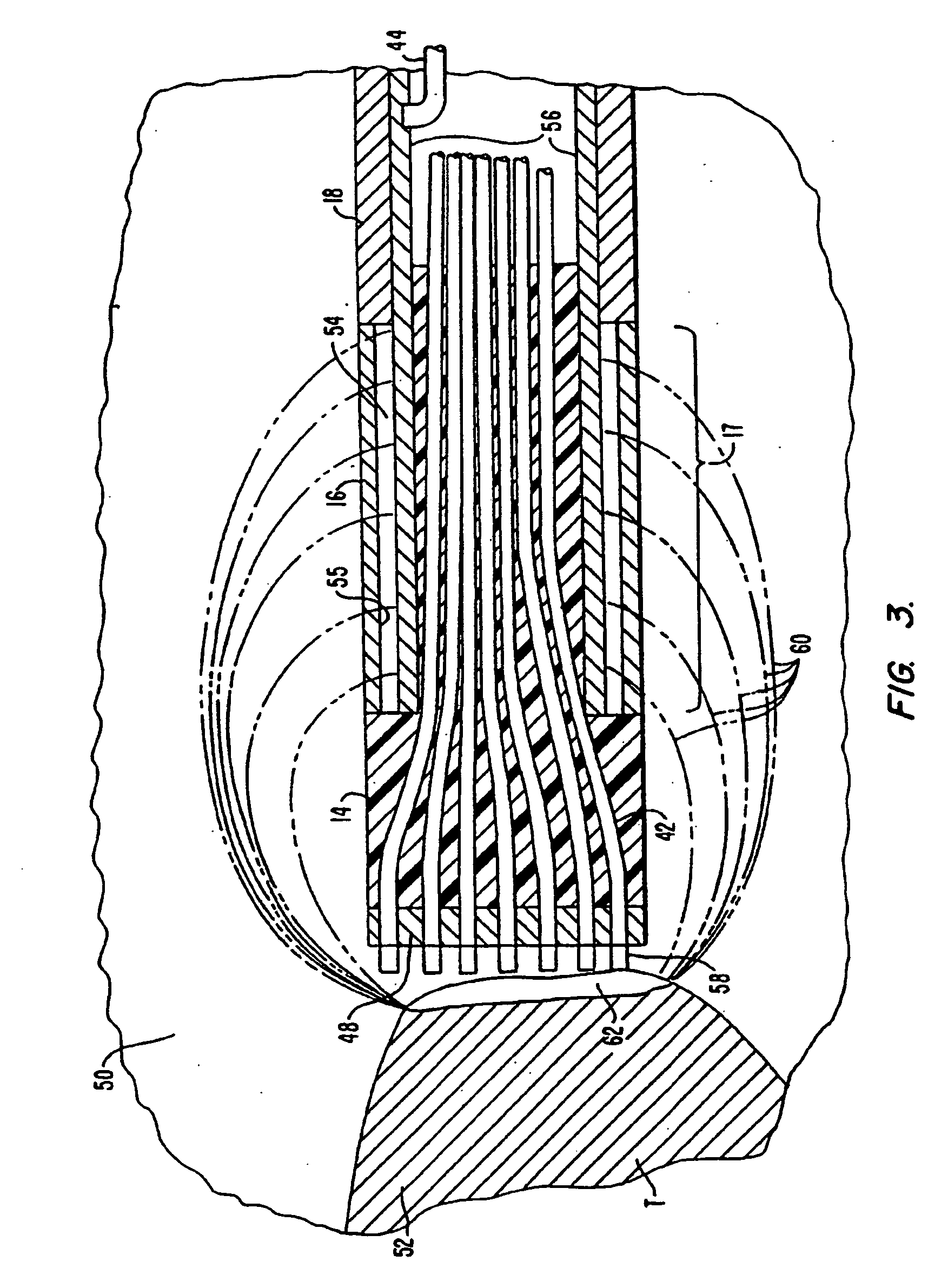Methods for electrosurgical tissue treatment between spaced apart electrodes
a tissue treatment and electrode technology, applied in the field of electrosurgical tissue treatment between spaced apart electrodes, can solve problems such as tissue necrosis to a depth, achieve the effects of reducing power delivery and ablation rate, limiting tissue necrosis depth, and increasing power delivery with electrosurgical devices
- Summary
- Abstract
- Description
- Claims
- Application Information
AI Technical Summary
Benefits of technology
Problems solved by technology
Method used
Image
Examples
Embodiment Construction
[0039] The present invention provides a method and apparatus for selectively heating a target location within a patient's body, such as solid tissue or the like, particularly including articular cartilage, fibrocartilage, meniscal tissue, and the like. In addition to articular cartilage and fibrocartilage, tissues which may be treated by the method and apparatus of the present invention include tumors, abnormal tissues, and the like. For convenience, the remaining disclosure will be directed specifically at the cutting, shaping or ablation of fibrocartilage and articular cartilage during arthroscopic or endoscopic procedures but it will be appreciated that the apparatus and methods can be applied equally well to procedures involving other tissues of the body, as well as to other procedures including open surgery, laparoscopic surgery, thoracoscopic surgery, and other endoscopic surgical procedures.
[0040] The target tissue will be, by way of example but not limited to, articular car...
PUM
 Login to View More
Login to View More Abstract
Description
Claims
Application Information
 Login to View More
Login to View More - R&D
- Intellectual Property
- Life Sciences
- Materials
- Tech Scout
- Unparalleled Data Quality
- Higher Quality Content
- 60% Fewer Hallucinations
Browse by: Latest US Patents, China's latest patents, Technical Efficacy Thesaurus, Application Domain, Technology Topic, Popular Technical Reports.
© 2025 PatSnap. All rights reserved.Legal|Privacy policy|Modern Slavery Act Transparency Statement|Sitemap|About US| Contact US: help@patsnap.com



